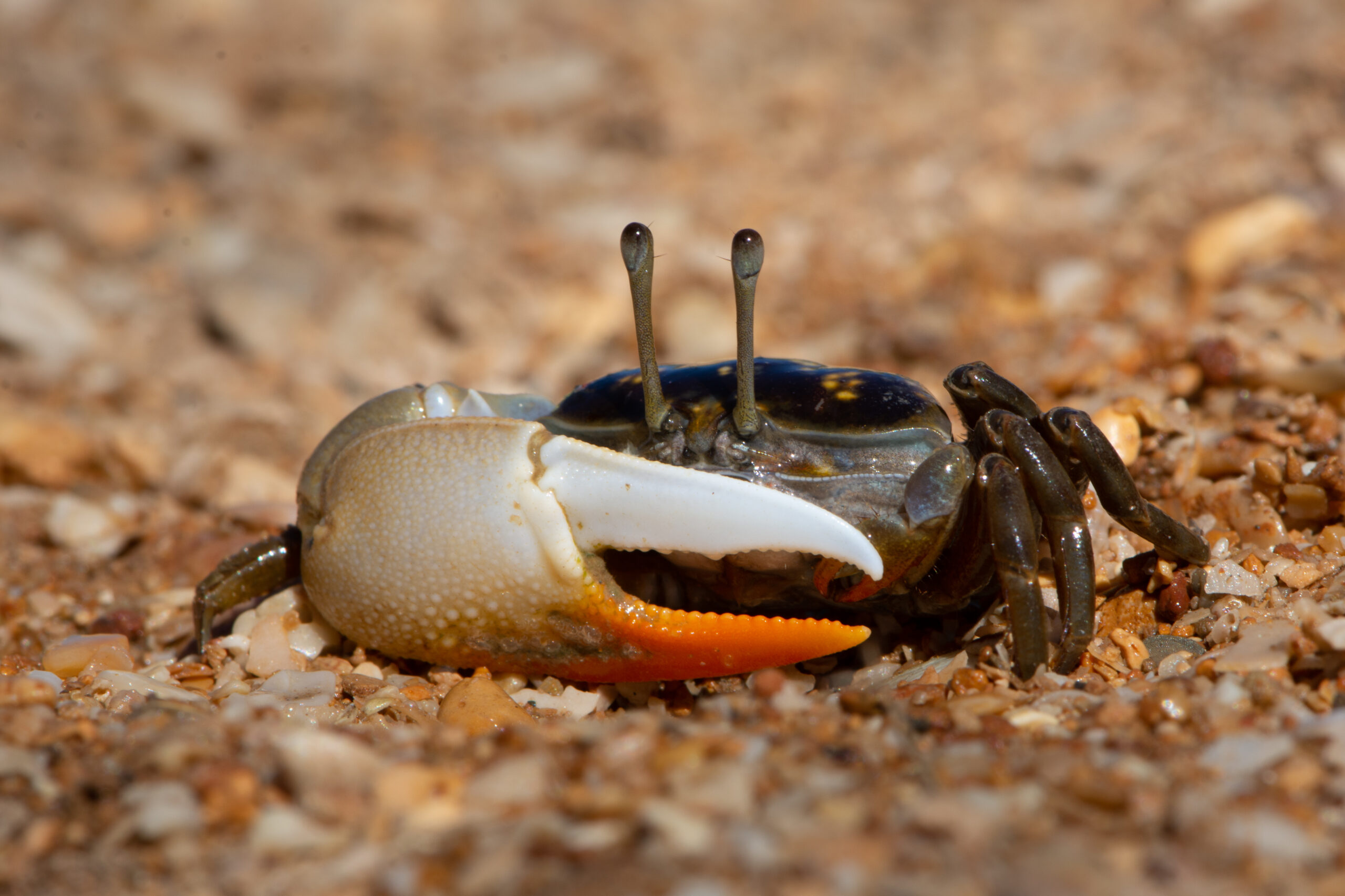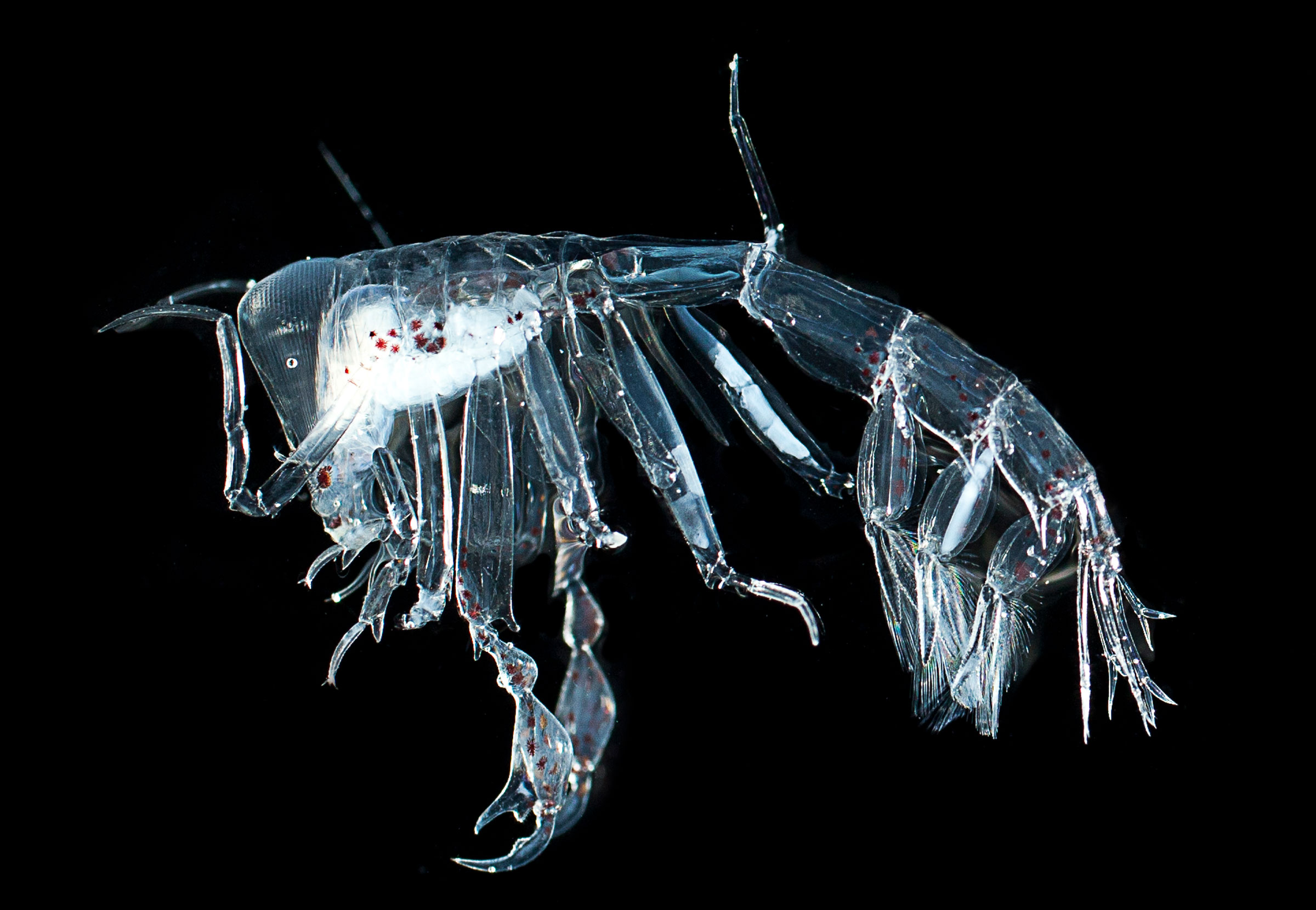Robots are becoming more integrated into our everyday lives. They can vacuum and mop our floors, mow our lawns and even clean our barbecues.
Beyond the home, robots are helping scientists find meteorites, dancing with aged care residents and even searching for life on alien moons.
With such great variety in design and purpose, where do robot designers get their inspiration from?
COLD-BLOODED CLUES
At the Neuroecology Group at UWA’s School of Biological Sciences, researchers are studying invertebrates for insights into how to improve robots.
Invertebrates are cold-blooded animals without a backbone or bony skeleton. They make up 97% of all animal species on Earth.
They can live on land, like insects, spiders and worms, or in water, like crabs, clams and coral.
While they have small brains and relatively few neural connections, invertebrates can perform sophisticated tasks very quickly. An ability that draws the attention of robot designers.
SHRIMPVISION
Let’s dive 300 metres beneath the surface of the ocean. We’re not quite at the seafloor, but it’s deep enough that there’s hardly any light from above.
This is where we find the semi-transparent Phronima or barrel shrimp.
Barrel shrimp | Monterey Bay Aquarium Research Institute (MBARI)
Phronima lives in a ‘barrel’ made from the remains of gelatinous animals. But what interested researcher Dr Zahra Bagheri was the shrimp’s compound eyes.
“My interest in deepsea creatures is how they see and gather information for different tasks,” says Zahra.
THE EYES HAVE IT
The shrimp’s two compound eyes are each comprised of hundreds of tiny eyelets. Its larger compound eye has high resolution with a very narrow field of view. This allows it to see objects at longer distances and over a wider depth range.
Its smaller compound eye has low resolution but sees almost everywhere around it. This is an important protective mechanism for open-ocean animals.
Together, these eyes allow Phronima to see its environment and perform different tasks in an efficient and elegant way.
To better understand how their eyes work, Zahra built a computer model.
“Using microscopic images of their eyes, we measure the direction each eyelet is looking,” she says. “This allows us to work out the resolution of what they’re seeing, like pixels in a camera.”
But what do Phronima’s eyes have to do with robotics? A prevailing thought in the study of robots and AI is that simpler systems are better. If engineers can work out how simple animals with smaller brains survive, they have a better chance of developing more elegant robotics designs.
Zahra says mastering the mechanics of Phronima’s eyes could lead to simpler yet improved cameras for submarines, underground mining or any environment without much light.
FEELIN’ CRABBY
Let’s leave the dark depths of the ocean and venture to the mangroves. Here we find the humble fiddler crab, who spends its days foraging and trying to dodge swooping birds.
Animal behaviour researcher Dr Callum Donohue says fiddler crabs are often used in experiments.
“Fiddler crabs lend themselves quite well to behavioural observation,” says Callum.
Individual fiddler crabs are easily monitored for long periods of time because they are centrally placed foragers who don’t venture far from their home burrow.
What makes the species interesting for robotics is how they react to threats.
“Escape responses are particularly interesting because, if an animal gets it wrong, they’re dead,” says Callum. “You have to process the information quickly and accurately.”

They also need to distinguish between what is and isn’t a threat.
“They can’t just run from everything, because they would spend their entire day running from tree branches or dragonflies,” says Callum.
Fiddler crabs can’t tell how close an object is because they lack depth perception. They overcome this challenge by using relatively simple and low-resolution two-dimensional cues such as the size an object takes up in their visual space or the rate it expands.
“We found fiddler crabs don’t time their escape based on the size of something in their field of vision,” says Callum. “Instead, they respond to how fast something expands.”
Fiddler crab experiment | Dr Callum Donohue
“That tells us they are sensitive to the speed of things moving at them, even if they cannot perceive depth.
“This likely means their bird predators are moving at a particular speed which is different to other creatures around them.”
KEEP IT SIMPLE, STUPID
These ‘looming cues’ are a great example of how an animal with a simple brain can make a quick decision with limited inputs.
If robotics designers can mimic this in their designs, they could incorporate it into machines such as self-driving cars to improve safety.
But no matter how advanced robots become, they still pale in comparison to the human brain.
“Evolution has had millions of years to come up with incredible systems to solve complex tasks – there is a lot we can still learn from observing nature,” says Callum.









